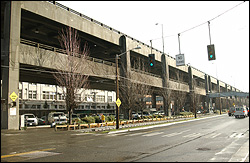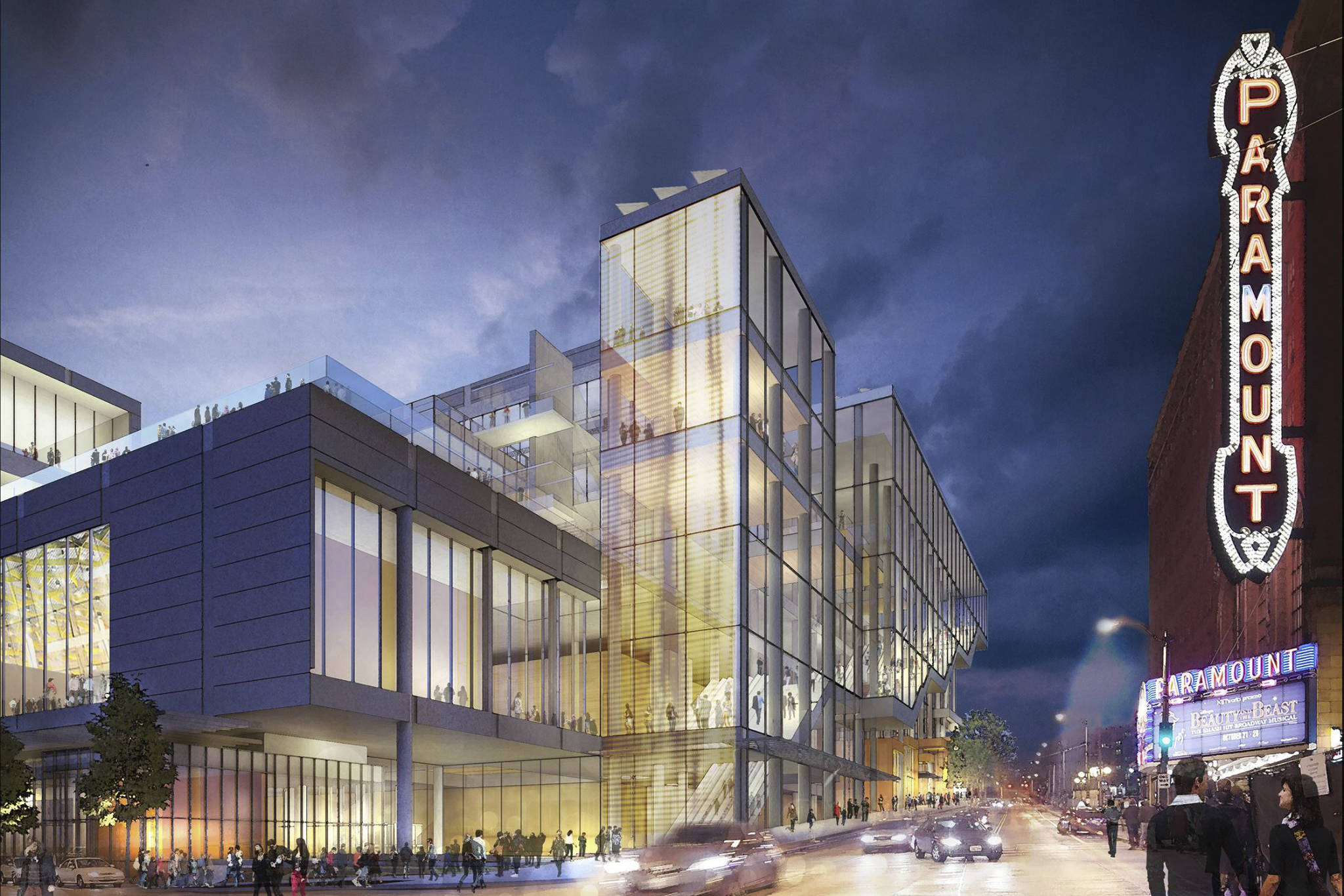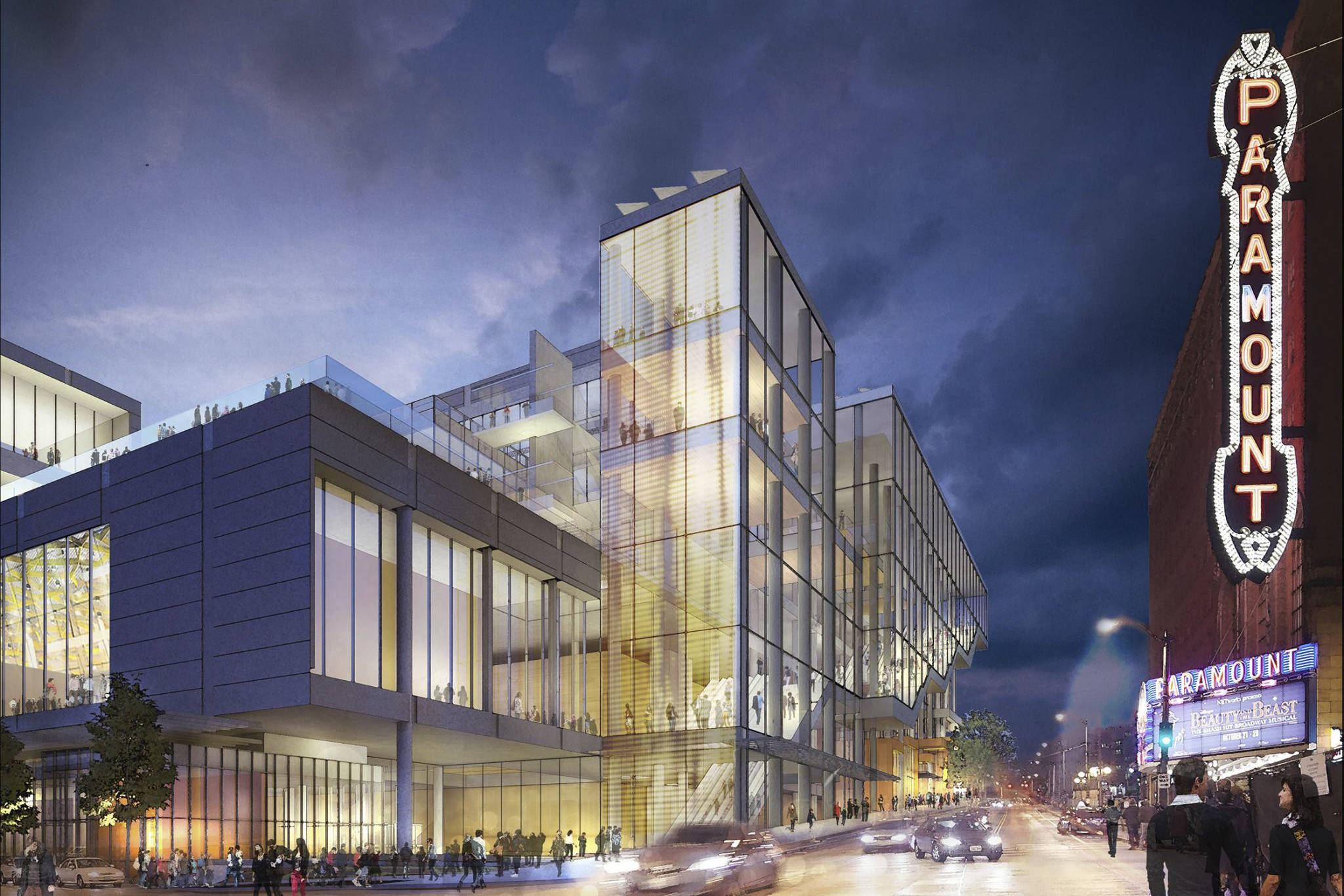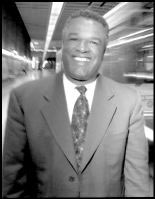Gov. Christine Gregoire and other state officials are urging Seattle Mayor Greg Nickels to abandon his expensive dream of burying the Alaskan Way Viaduct in a tunnel along Seattle’s waterfront. Instead, they say, the city should embrace the idea of a replacement elevated roadway above ground. The cost of replacing the earthquake-damaged, 52-year-old, four-mile elevated state highway, meanwhile, has skyrocketed by another $300 million, to as much as $4.4 billion for a tunnel or $3.4 billion for an above-ground elevated highway, in part because the city has added a proposal that Aurora Avenue north of the Battery Street tunnel be lowered. Deputy Mayor Tim Ceis says the city will not yield to state pressure to give up on a tunnel, though he acknowledges that funding for the viaduct is in jeopardy. He muses that perhaps the highway will have to be torn down and not replaced at all.
The debate over the viaduct is heating up for a couple of reasons. The federal government recently appropriated $231 million for the project, far short of Nickels’ stated goal of $1 billion in federal money. The governor’s response has been to urge Nickels to settle for a lower-cost, above-ground, better-engineered elevated freeway. Gregoire’s legislative director, Marty Brown, paraphrases the governor’s remarks to Nickels as, “Let’s be realistic here.” Brown says, “Anybody assuming we are going to get a matching amount from the federal government isn’t reading the same stuff as we are.”
Deputy Mayor Ceis is defiant. “The mayor is not going to change his position,” he says. Ceis points out that the federal appropriation process is in its first year, and the city hopes to obtain more funds in the future.
Key Seattle members of the state Legislators, meanwhile, find the city’s position so disturbing that they are considering asking the Washington State Department of Transportation (WSDOT) to abandon the tunnel as an option. Although the viaduct is in the city, which must issue permits for construction of a replacement, it is officially state Highway 99, and the state has the sole authority to study and decide on a solution. Neither the state nor the city wants to be at odds with whatever results, but the city ultimately has limited say in the matter. State House Appropriations Chair Helen Sommers, House Transportation Chair Ed Murray, and House Juvenile Justice chair and Transportation Committee member Mary Lou Dickerson, all Seattle Democrats, will begin to collect signatures for a letter to WSDOT early next month. “We are wasting too much time,” says Sommers. “We need to move faster.” She notes that Gregoire could direct WSDOT to drop the tunnel.
The second reason for concern over the tunnel option is Initiative 912, a November ballot measure that will ask voters to repeal a 9.5-cent increase in the gas tax passed by the Legislature earlier this year. The gas-tax increase will raise $4.26 billion of the Legislature’s total transportation package of $8.5 billion—$2 billion of which has been earmarked for replacing the viaduct. Many in politics believe that Nickels’ desire for a tunnel will be perceived as a gold-plated public works boondoggle that arouses voter anger and will help I-912 pass. Ceis dismisses that argument. “Will it change anybody’s mind in Wenatchee?” he asks. “I don’t think so.”
Ceis does acknowledge that the city has added elements to the project along with the tunnel that have increased the cost. Foremost among them is reconnecting the street grid between Queen Anne and South Lake Union by lowering Aurora Avenue North at a cost of up to $220 million. Lowering Aurora has been a longtime desire of billionaire developer Paul Allen’s Vulcan holding company, which is seeking massive public investment in the South Lake Union neighborhood, where it owns some 60 acres of property. Says Ceis: “Vulcan is irrelevant to this. . . . This is an idea our SDOT [Seattle Department of Transportation] folks came up with.” Seattle City Council members Peter Steinbrueck and Richard Conlin, however, say Vulcan lobbied them to lower Aurora even before Nickels was elected (see “South Lake Disunion,” Oct. 1, 2003). Ceis says lowering Aurora is not an essential element of replacing the viaduct. “It can be included or excluded,” he says. “If you are looking at a place to trim, you start looking at that first.”
The deputy mayor also acknowledges that the potential passage of I-912 presents a real threat to any replacement of the viaduct, tunnel or not. If I-912 passes, Ceis says, the city would have to see what to do about the viaduct with $408 million already appropriated by the state and federal governments. “That probably would pay for demolition,” he says, and not replacing the viaduct at all would have to be seriously considered. “The state and the city will have to take a look,” Ceis says. He thinks the risk of leaving the damaged viaduct standing is too great. “It’s our citizens that will be hurt or killed,” he says. Seattle City Council President Jan Drago and Conlin, the City Council’s Transportation chair, also say that the no-replacement option will have to be thoroughly explored if I-912 passes. State Reps. Sommers, Dickerson, and Murray unequivocally reject the no- replacement possibility. Says Sommers: “Industry, commerce, and the Port would be in gridlock.”
Political gridlock between the city and the state seems to be the outcome most likely as the viaduct crisis continues.








